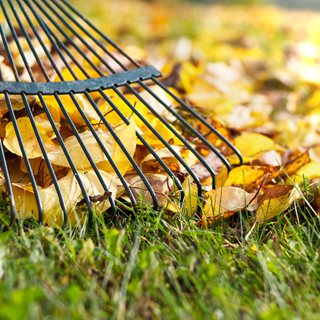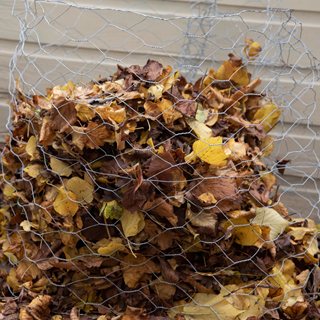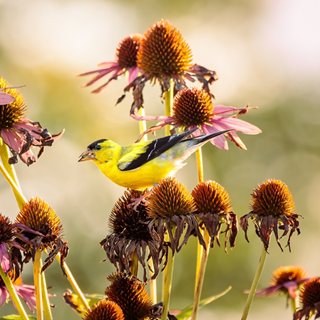Fall Garden Cleanup: What to Cut Back, What to Leave, and Why
As the growing season winds down, it’s tempting to clear every bed and bag up all the leaves. While a fall cleanup can reduce disease and keep things tidy, there are also big benefits to leaving parts of your garden “as is” through the colder months. The right balance depends on your plants, climate, and the amount of wildlife support you want to provide.
Make fall cleanup easier by clicking here to download our printable FALL GARDEN CLEANUP CHECKLIST. It covers all these essential cleanup tips, plus a few bonus fall chores.
Pros of Fall Cleanup:
- Reduces pests and disease: Removing diseased foliage (like mildew-covered peony leaves or rust-spotted hollyhocks) prevents problems from carrying into spring.
- Keeps things neat: Clearing beds now makes way for early bulbs and lightens spring chores.
- Controls spreaders: Removing seed-heavy plants prevents them from overtaking pathways or gravel.
Cons of Over-Cleaning:
- Loss of habitat: Many pollinators, salamanders, turtles, and small mammals shelter in leaf litter and hollow stems. As the National Wildlife Federation (NWF) explains, “Critters ranging from turtles and toads to songbirds, mammals and invertebrates rely on leaf litter for food, shelter and nesting material.”
- Less winter beauty: Ornamental grasses and seed heads bring movement and structure when the garden is bare.
- Nutrient loss: “Leaves form a natural mulch that helps suppress weeds and fertilizes the soil as it breaks down,” says NWF naturalist David Mizejewski. Bagging them up sends free fertilizer to the landfill.
Why Leave the Leaves?
The U.S. Environmental Protection Agency estimates that yard debris makes up more than 12 percent of the nation’s solid waste, at about 35 million tons a year. When trapped in landfills, this organic matter generates methane, a potent greenhouse gas.
Beyond the environmental impact, leaves are one of the gardener’s best resources. As the National Gardening Association notes, “Fall leaves are like a big load of free organic fertilizer strewn about your yard. If those nutrients were bagged and sold, you’d pay money for them.”
The solution is to keep leaves on your property whenever possible.
- Mulch them into the lawn with a mower or leaf shredder; shredded leaves won’t smother the grass.
- Rake into garden beds as a natural mulch.
- Pile between vegetable rows for dry walkways, then rake decomposed leaves into the soil next spring.
- Compost them or add to worm bins to feed microbes and improve soil structure.
- Build refugia by filling chicken wire bundles with leaves and sticks to create shelter for lacewings, ground beetles, and other beneficial insects; practical and decorative at the same time.
“The less time you spend raking leaves, the more time you’ll have to enjoy the gorgeous fall weather and the wildlife that visits your garden.”
— National Wildlife Federation Naturalist, David Mizejewski
What to Leave Standing
- Ornamental grasses for structure and bird habitat.
- Perennials with sturdy seed heads (coneflowers, rudbeckias, alliums) to feed birds.
- Shrubs with berries (holly, viburnum, winterberry) for winter color and wildlife food.
- Hollow stems (bee balm, hydrangea, elderberry) for overwintering native bees.
What Not to Leave
- Diseased or pest-ridden plants; dispose of these, do not compost.
- Slimy foliage (hostas, daylilies) that becomes a slug haven.
- Weedy annuals or invasive self-seeders about to spread.
- Thick, unshredded layers of leaves on lawn areas, which can smother grass.
A Balanced Approach
Try a two-phase cleanup by removing diseased and weedy material now, but leave healthy perennials, grasses, and a layer of leaves in place until spring. This way, your garden stays healthier while still supporting birds, pollinators, and soil life through winter.
Quick Tips for Smart Fall Cleanup
- Chop leaves with a mulching mower instead of bagging them.
- Spread shredded leaves over garden beds as free mulch.
- Create refugia with chicken wire and leaves to shelter beneficial insects.
- Use leaves as mulch between vegetable beds—rake in the decomposed matter next spring.
- Add leaves to worm bins to boost microbial activity.
- Remove diseased plants promptly to prevent spring problems.
RELATED:
How to Prepare Your Garden for Winter
What to Plant in Your Fall Garden
Fall Gardening Ideas & Tips




